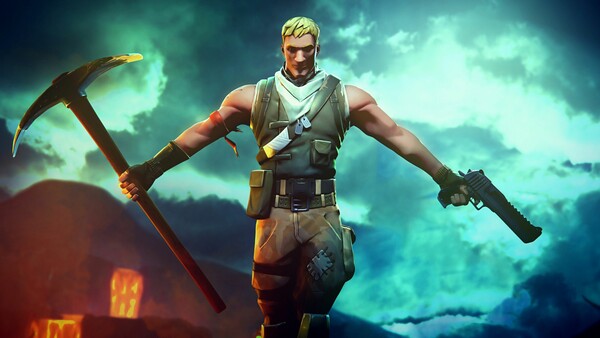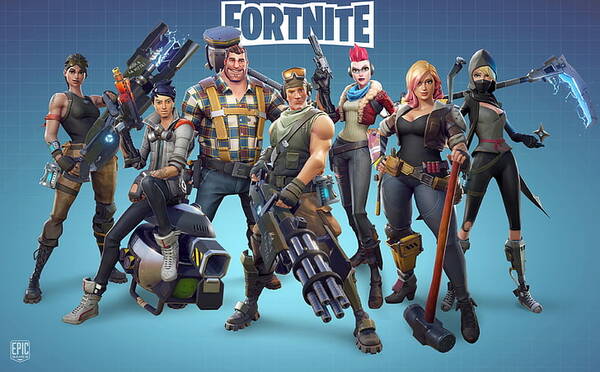Introduction
Fortnite, developed by Epic Games, has become a cultural phenomenon since its release in 2017. While its battle royale mode is celebrated for its unique blend of shooting and building mechanics, the latter has sparked intense debate among players. Building is the cornerstone of Fortnite’s gameplay, but its evolution has created a divide between casual and competitive players. This article delves into the complexities of Fortnite’s building mechanics, exploring how they have shaped the game’s identity while also creating challenges for its community.
The Birth of Building: A Revolutionary Mechanic
How Building Redefined Battle Royale
When Fortnite introduced building as a core mechanic, it set itself apart from other battle royale games like PUBG and Apex Legends. Players could harvest materials and construct structures on the fly, adding a layer of strategy and creativity to the genre. This mechanic allowed for dynamic gameplay, where no two matches felt the same.
The Early Days: A Learning Curve
In the early days, building was relatively simple. Players used basic structures like walls and ramps for cover or to gain high ground. However, as the community grew, so did the skill ceiling. Players began experimenting with advanced techniques, such as editing structures mid-combat and building elaborate forts. This marked the beginning of a skill gap that would only widen over time.
The Rise of Competitive Building
The Emergence of “Sweats”
As Fortnite gained popularity, a subset of players emerged who focused solely on mastering building mechanics. These players, often referred to as “sweats,” could construct towering structures in seconds, leaving casual players in the dust. This shift transformed the game into a high-speed, high-skill competition.

As Fortnite gained popularity, a subset of players emerged who focused solely on mastering building mechanics.
The Impact on Casual Players
For casual players, the rise of competitive building was both awe-inspiring and intimidating. Many found themselves outmatched by opponents who could build faster and more efficiently. This led to frustration and a sense of exclusion, as the game seemed to cater more to skilled players than to the average fan.
Epic Games’ Response: Balancing Act
Introducing Building Nerfs
Recognizing the growing divide, Epic Games implemented several changes to balance building. These included reducing the amount of materials players could carry and increasing the time it took to harvest resources. While these changes aimed to level the playing field, they were met with mixed reactions.
The Zero Build Mode Experiment
In 2022, Epic Games introduced Zero Build mode, a version of Fortnite that removed building entirely. This mode was a hit among casual players, offering a more accessible experience. However, it also sparked debate about whether Fortnite could retain its identity without its signature mechanic.
The Skill Gap: A Growing Divide
The Role of Creative Mode
Creative mode allowed players to practice building in a low-pressure environment. While this helped some improve their skills, it also widened the gap between casual and competitive players. Those who invested time in Creative mode gained a significant advantage, further alienating less dedicated players.
The Psychological Impact
The skill gap had a psychological impact on the community. Many casual players felt discouraged, leading to a decline in their enjoyment of the game. On the other hand, competitive players thrived, pushing the limits of what was possible with building mechanics.
The Meta Shift: Building vs. Shooting
The Rise of Spray-and-Pray Weapons
To counter the dominance of building, Epic Games introduced weapons that could quickly destroy structures, such as the Minigun and Rocket Launcher. These weapons shifted the meta, forcing builders to adapt their strategies.
The Debate Over Skill Expression
Some argued that these changes undermined the skill required for building, while others believed they made the game more balanced. This debate highlighted the tension between maintaining Fortnite’s unique identity and ensuring a fair experience for all players.

Some argued that these changes undermined the skill required for building, while others believed they made the game more balanced
The Competitive Scene: A Showcase of Skill
Tournaments and Building Mastery
Fortnite’s competitive scene became a showcase of building mastery. Events like the Fortnite World Cup highlighted the incredible skill of top players, who could build and edit structures with lightning speed. These tournaments solidified building as a defining feature of Fortnite’s esports identity.
The Pressure to Perform
However, the emphasis on building also placed immense pressure on competitors. Mistakes in building could cost players a match, leading to a high-stakes environment that was both thrilling and exhausting.
The Community’s Divided Opinions
Casual Players’ Perspective
Many casual players felt that building had become too complex and overwhelming. They longed for a simpler version of Fortnite that prioritized shooting and strategy over construction.
Competitive Players’ Perspective
On the other hand, competitive players viewed building as the heart of Fortnite. They argued that removing or simplifying it would strip the game of its uniqueness and challenge.
The Future of Building in Fortnite
Potential Solutions
Epic Games faces the challenge of balancing the needs of both casual and competitive players. Potential solutions include separate ranked modes, further adjustments to building mechanics, or new gameplay elements that complement building without overshadowing it.
The Importance of Innovation
Ultimately, Fortnite’s success lies in its ability to innovate. Whether through new modes, mechanics, or balance changes, the game must continue to evolve to keep its diverse player base engaged.

Ultimately, Fortnite’s success lies in its ability to innovate
Conclusion
Fortnite’s building mechanics have been both a blessing and a curse. They revolutionized the battle royale genre and created a unique gameplay experience, but they also led to a skill gap that divided the community. As Epic Games navigates this complex issue, the future of Fortnite will depend on its ability to balance innovation with inclusivity.


